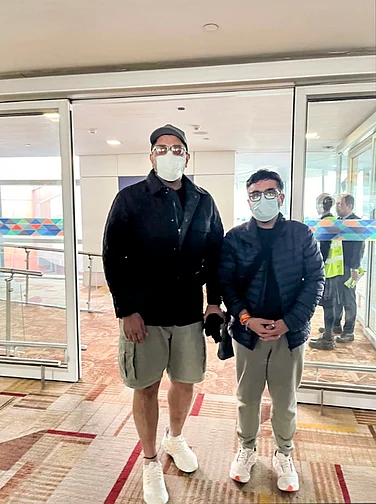In the decades since 1990s when the statues of Dr Babasaheb Ambedkar – Dalit icon and Father of the Indian Constitution – started being mass produced, there has been no change in the optics. Statue makers say that this is the only statue - standing tall, clad in a suit, holding the Constitution of India in one hand and the index finger of the other hand pointed forward – that has no other variation and looks as if it is cast from the same mould.
For Nanasaheb Shirke, an 80-year-old retired government employee and Dalit activist, Ambedkar’s statue is symbolic of the Dalit identity. Speaking to Outlook, Shirke said, “For us, Babasaheb’s statue in its present form is our identity. The Constitution is the power he has given us. His thoughts were progressive making the Dalits a progressive community.” He has traveled miles from the far-flung Buldhana district in Maharashtra to Mumbai to visit Chaityabhoomi in Dadar, central Mumbai – a revered place of pilgrimage for the Dalit community. This annual visit has become a family tradition for Shirke and his 72-year-old wife Sukanya.
In this visit, which Shirke says could be his last due to multiple ailments that have afflicted him, he is eager to see the progress of the Ambedkar statue, which is under construction near Chaityabhoomi. The site of the under construction colossal 137 metres tall statue of Dr Babasaheb Ambedkar, has been attracting a fair share of tourists who are on their annual pilgrimage to Chaityabhoomi, the place where Ambedkar was cremated. Though access to the site of the statue is restricted, people try to reach the outer limits for a look at the progress has been made in years since the construction of the statue was announced.
To be known as the ‘Statue of Equality’ it was pitched by the previous BJP-Shiv Sena government then headed by Devendra Fadnavis, as the third largest statue in the world. The foundation stone was laid in October 2015 by Prime Minister Narendra Modi. Estimated to cost Rs 1090 crore, the Statue of Equality will be ‘the first thing air travelers from Mumbai will see’ was the aim of the then Fadnavis government. The statue will be a part of the ambitious memorial to Ambedkar, planned by the Maharashtra government.
The 12-acre museum will showcase the life, times, work and achievements of Ambedkar and will be linked to Chaityabhoomi. For the record, a bust of Ambedkar at Bindu Chowk in Kolhapur in western Maharashtra, inaugurated on December 7, 1950 is the world’s first statue of the Dalit leader.
In the past, a number of statues of Ambedkar across the country including Maharashtra have been desecrated or attempts have been made to defile them. In many places these statues have a protective cage around them, which in a way denotes the clipping of the aspirations of the Dalits. In many cases there has been a failure to apprehend the miscreants. Therefore, as a solution the statues of Ambedkar have gone behind protective cages.
Researcher Dilip Paraghan, who has been studying the work of the Dalit icon, told Outlook that it was post-1990s – which was the centenary year of the leader – many statues of Ambedkar were built and continue to be constructed across the country. “There has been a debate on the building of statues and the use of public spaces. The statues of Babasaheb Ambedkar outnumber any other in India. This is symbolic as post-1990s has seen a strong emergence of various Dalit movements across the country. Dr Ambedkar is the symbol of the Dalit identity and the Dalit assertion of power,” said Paraghan.


























